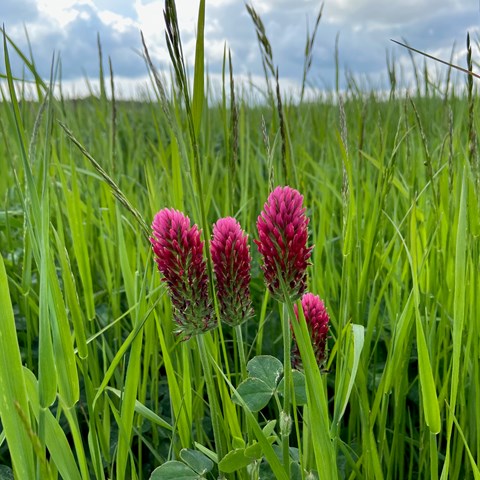Different kinds of crop diversity at conventional and organic farms

The diversity of crops grown in a field, on a farm, and in the landscape tends to have a positive impact on the wild biodiversity, as well as crop production, and ecosystem functions that support and regulate crop production, for example plant nutrient transformation or biological control of pests. In particular, the functional diversity (i.e., that crops with different characteristics are grown rather than considering only the number of species of crops) may be important for these positive effects. In a new Swedish study, the crop diversity at more than 80.000 Swedish farms, followed during the period 2001–2018, have been analyzed.
Index to measure diversity
The study used a diversity index to analyze the diversity of the crops. The index takes into account both how many species of crops that are grown and how their area is distributed among themselves. If two farms grow the same number of crop species but one farm has a more even distribution of land between the crops, then that farm will have a higher diversity index. The overall diversity index was divided into two parts. One part described the functional diversity of crop groups. The second part described the diversity within each crop group. The nine groups of crops used for the division were pulses, oilseeds, cereals, fruits and berries, vegetables, herbs, beets and potatoes, fodder crops, energy crops, pastures and finally a group of fallows and protection zones. Farms with more crop groups and a more even distribution of cultivation between crop groups receive, according to this method, a higher value of the functional diversity of crops.
The functional diversity in Swedish crop production has decreased
The researchers found that the functional diversity of crops grown on Swedish farms has declined by 12 percent since 2001. The decline occurred mainly during the first half of the time period before stabilizing. The overall diversity index fell by 6 percent, with a decline in the first half of the time period and some recovery thereafter. The diversity within the crop groups also first fell and then rose again, and overall during the time period had increased by 7 percent.
Farm conditions affect crop diversity
In an in-depth analysis of factors explaining differences in crop diversity between farms, it was found that farm size and average temperature were positively associated with all three measures of crop diversity. Increased clay content on the farm was related to a lower functional and total diversity of crops but a higher diversity of crops within each crop group. Organic farms had a higher functional diversity of crops but a lower diversity of crops within each crop group and also an overall lower diversity of crops. The higher functional diversity on organic farms can be explained by the fact that cereals were less dominant while the share of several other crop groups including legumes was higher. A similar pattern was observed for the farms that expanded their organic production during the study period. This led to an increased functional diversity in cultivation but a reduced diversity of cultivation within the crop groups.
Ola Lundin